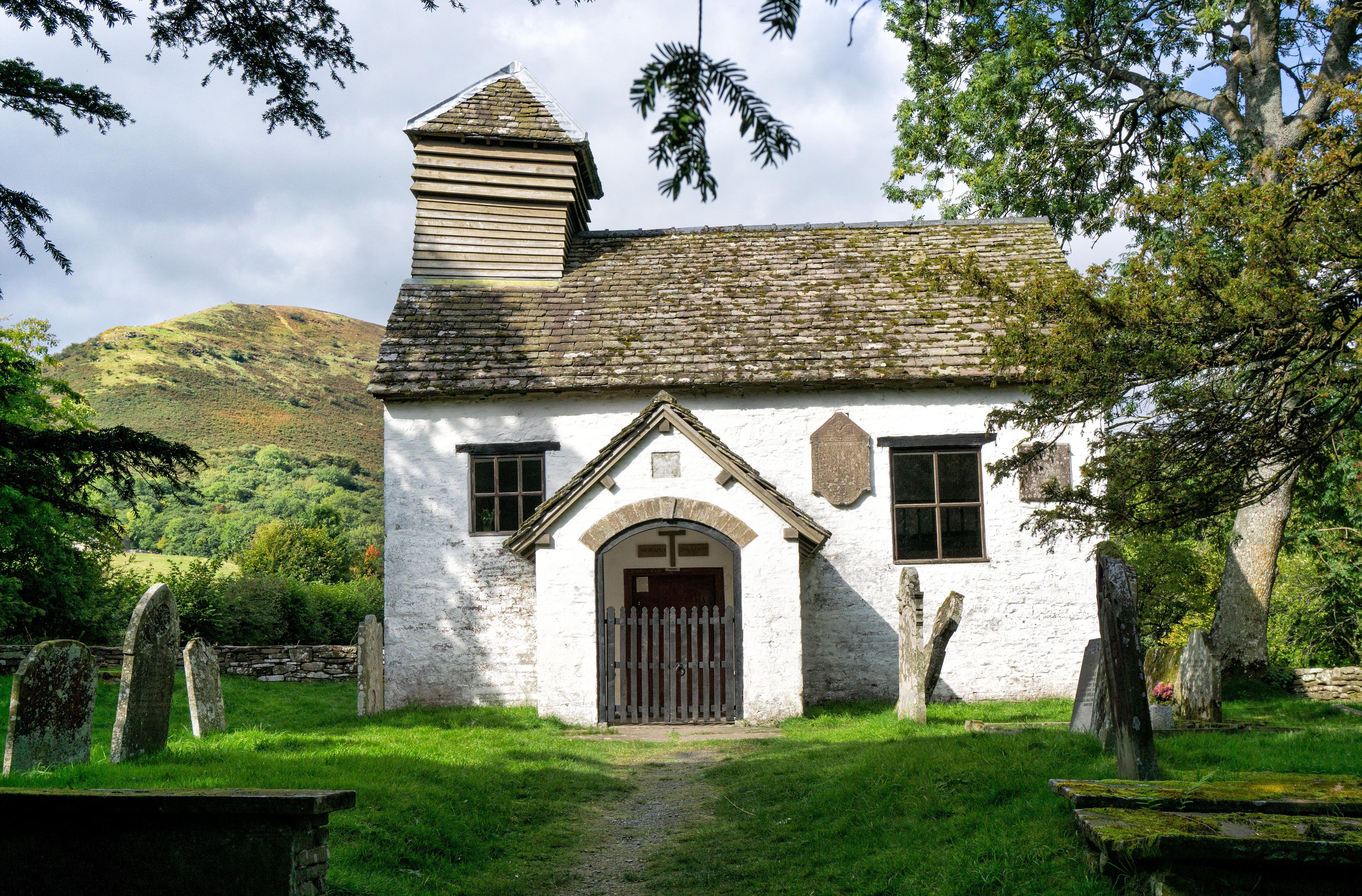St Ellyw
Llanelieu, Powys
The church is remotely situated, deep in the Black Mountains (Brecon Beacons National Park) in a large and ancient churchyard.

Set in the hidden valley of the Honddu river, with the Black Mountains to the west and the great ridge carrying Offa's Dyke to the east, Capel y Ffin melds art and landscape seamlessly.
Capel y Ffin, Powys
Built in 1762, on an ancient site of worship and pilgrimage, St Mary’s is reached by a remote country road, where the trees meet at the top forming a verdant tunnel, the road is slippy in summer and often impassable in the winter. The church is sweet and small, and looks for all the world like a house; the giveaway being the lopsided bellcote. Diarist and clergyman Francis Kilvert, who lived a few miles away, described it as 'squatting like a stout grey owl among its seven great black yews'; today its whitewashed walls, lichen encrusted roof and plain sash windows ooze character.
Like so many Welsh churches it is made special by its place in the landscape; Capel y Ffin translates at chapel at the border. What was in the minds of those who founded it on this spot? Tiny St Mary’s is the chapel of ease for the church at nearby Lanigon, with room for just 20 or so worshippers. Inside is a simple, small chamber with a stone floor, wooden seating, a two sided gallery, and a pulpit dating from 1780.
This is a simple place to pause and reflect, in classic border country. Capel y Ffin has long been an inspiration for artists who no doubt wandered around the church and churchyard. Dorothy and William Wordsworth, Allen Ginsberg, Francis Kilvert, Bruce Chatwin, David Jones and Eric Ravilious are just some of the names who stayed and passed through the village here.
In 1928 Eric Ravilious painted a ‘Wet Afternoon with view of the Church of St Mary, Capel y Ffin’ with himself on the winding roads, and a multitude of detail in the hedgerows and trees; the church a blank white box flanked by dark yews and clouds looming above. And in the churchyard survive two headstones carved by Eric Gill, who founded an artistic community in the nearby monastery where he designed the typefaces Perpetua and Gill Sans. The monastery was built in 1869 and is now self catering accommodation. An annual pilgrimage runs from Cape-y-Ffin to nearby Llanthony Priory, and the chapel is found on the Cistercian Way (East Route, Hay on Wye to Llanthony).
To the north is the road known as Gospel Pass, over the mountains to Hay on Wye, which Dorothy and William Wordsworth described as one of their favourite walks, and it seems fitting that a window in the church is inscribed with the words from Psalm 121: ‘I shall lift up mine eyes to the hills whence cometh my salvation'. The dramatic views and sense of time standing still in this heavenly landscape is surely one of Cape y Ffin’s enduring themes.
The final powerful pull comes from David Jones painting of 1925 in gouache and pencil, hanging on the stairway by the chapel door. Christ on a rugged cross is the focus of ‘Sanctus Christus de Capel y Ffin’, with the local landscape as the eerie backdrop. The hills are split by the cruxifion and Christ sits in the gouged out gap; bleak, and powerful, with the black earth below. ‘Christ is right here’ is the message, and it’s difficult not to be touched by the spiritual resonance of this place.
Llanelieu, Powys
The church is remotely situated, deep in the Black Mountains (Brecon Beacons National Park) in a large and ancient churchyard.
Llanthony, Monmouthshire
Priory of Augustinian canons founded early in the 12th century in the beautiful and secluded Ewyas valley.
Talgarth, Powys
This medieval church is said to occupy the site where St Gwendoline was buried, reputedly one of many saintly descendants of the 5th century king Brychan Brycheiniog.